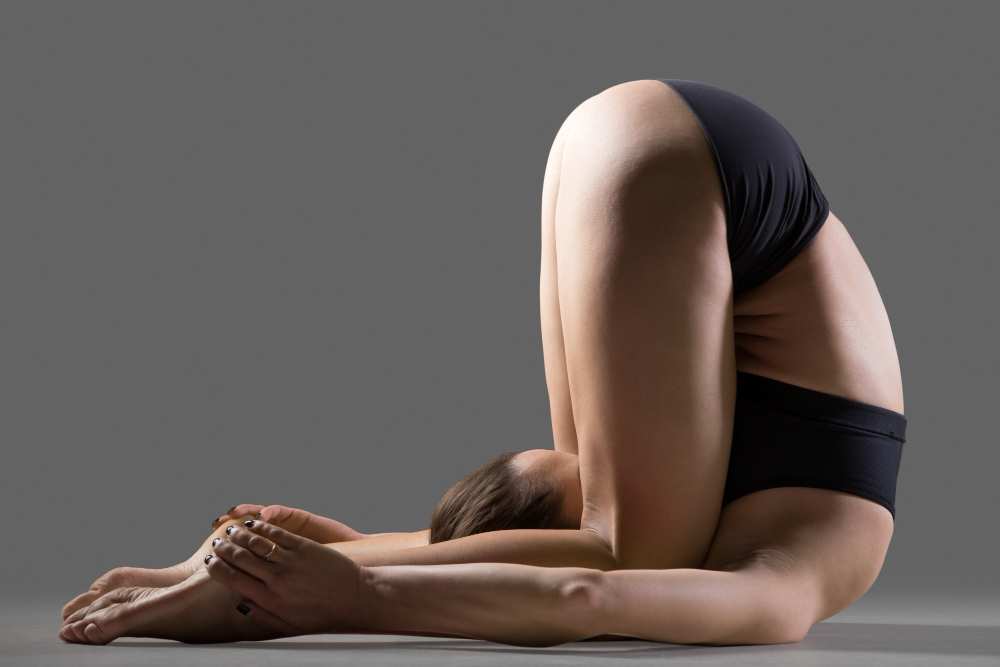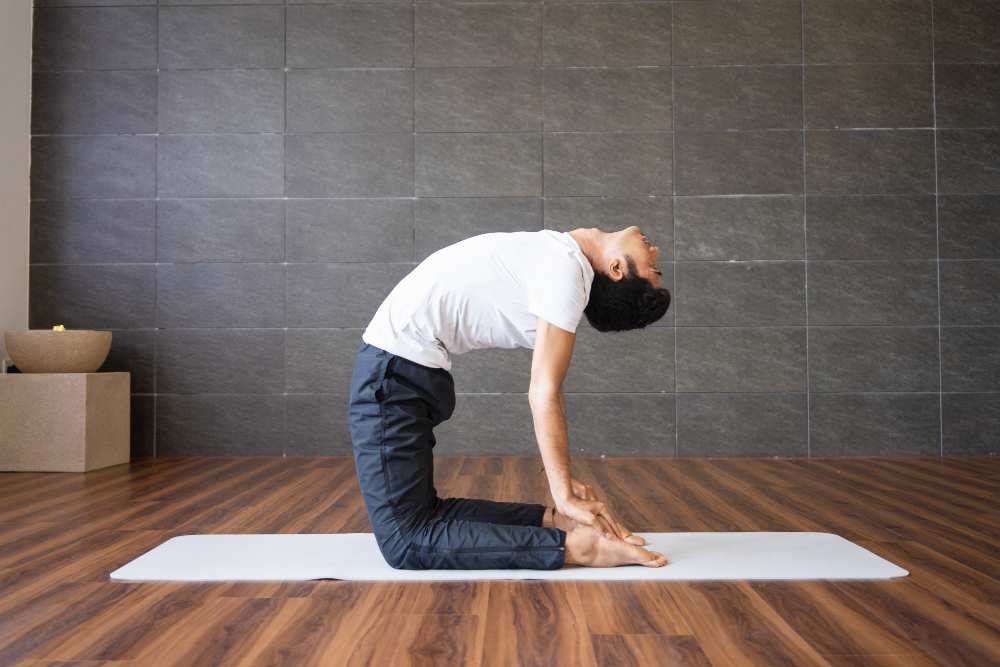The human body operates akin to a sophisticated machine, relying on a multitude of mechanisms to function optimally. Hormones constitute a vital mechanism that significantly influences various bodily processes. Growth, development, mood, energy levels, and more are intricately linked to the intricate interplay of hormones. Disruptions in hormonal equilibrium can precipitate a host of unwelcome effects, such as fluctuations in weight, disturbances in sleep patterns, irregular menstrual cycles, persistent fatigue, and a myriad of other concerns. Nevertheless, the practice of yoga, coupled with unwavering determination, can serve as a potent remedy for restoring balance and harmony within the body.
Yoga to balance Hormonal And PCOS
if you’re wondering about the efficacy of yoga in addressing PCOS and hormonal imbalances, the answer is a resounding yes. Yoga has the potential to serve as a transformative tool in restoring hormonal equilibrium. The primary culprits behind hormonal imbalances often stem from stress. Yoga, with its stress-reducing properties, fosters a sense of tranquility within the body. By slowing down and alleviating stress, it facilitates the recuperation of the nervous system from the persistent turmoil, both physical and mental. Adjusting the rhythm of life contributes to the regulation of hormones and promotes a restful night’s sleep. The various asanas in yoga are meticulously crafted to target specific areas of the body, fostering improved healing and overall well-being.
1.Bhujangasana Or Cobra Pose for Hormonal balance
The Cobra Pose is a fundamental yoga position that offers a multitude of advantages. By opening up the chest, it allows the lungs to expand, thereby enhancing respiratory health. Regular practice of this pose can significantly improve lung function.
To perform the Cobra Pose:
- Begin by lying face down on your yoga mat.
- Align your hands with your rib cage and position them beneath your shoulders.
- Bring your feet together and point them outward.
- Gradually lift your chest and upper body while gazing upward.
- Hold this position for several seconds, focusing on your breath.
- Lower your body back down and release the tension in your legs and arms.
- Repeat these steps for optimal benefits.
2.Setubandhasan Or Bridge Pose for Hormonal balance
Setu Bandhasana, also known as the Bridge Pose, is renowned for its capacity to calm the mind and nervous system, effectively reducing feelings of anxiety and melancholy. Furthermore, it promotes a sense of overall tranquility. From a physical standpoint, this pose is particularly beneficial for the chest, neck, and spine.
To execute the Bridge Pose:
- Lie down on your back to begin.
- Bend your knees and position your feet at a distance equivalent to the width of your hips on the floor.
- Rest your arms alongside your body, palms facing downward.
- Inhale deeply as you lift your hips off the ground, forming an arch with your body.
- Allow your muscles to relax as you hold the pose for a few seconds.
- Gently lower your knees back down and then repeat the pose as desired.
3.Shalabhasana Or Locust Pose for Hormonal Balance
Salabhasana, commonly known as the Locust Pose, is renowned for its ability to activate the core muscles and assist in the management of issues like slipped discs and backaches.
Here’s how to practice the Salabhasana:
- Lie on your stomach on the yoga mat.
- Extend your arms backward with your palms facing downward.
- Point your toes outward and extend your legs.
- Lift your head and chest along with your thighs and legs off the mat.
- Raise your hands from the floor and stretch them backward.
- Maintain this position, focusing on your breathing.
- Return to the initial position and repeat as desired.
4.Masalasana Or Garland Pose for Hormonal Balance
Masalasana, also known as the Garland Pose, is specifically beneficial for improving digestion. PCOS often gives rise to issues such as indigestion, bloating, abdominal discomfort, and other digestive disturbances. Masalasana serves to enhance digestion, strengthen the core, and relieve tension in the hip area, thereby mitigating pain and unease.
Here is how you can practice Masalasana:
- Stand on the yoga mat with your feet positioned wide apart.
- Gradually lower yourself into a complete squat position.
- Nestle your elbows snugly against the inner sides of your knees.
- Bring your palms together in a Namaskar or prayer position.
- Maintain a steady breathing rhythm as you hold the posture for a few moments.
5. Prasarita Padottanasana Or Wide Stance Pose for Hormonal Balance
The described posture effectively fortifies the back, abdominal muscles, and legs, contributing to the alleviation of stress and anxiety, while simultaneously enhancing blood circulation. An improved blood flow pattern plays a vital role in the regulation of hormone levels within the body.
To assume the posture:
- Stand on your yoga mat with your feet comfortably apart.
- Slightly curl your toes inward for enhanced stability.
- Inhale deeply before initiating the forward bend.
- Exhale as you gradually fold your body forward, moving toward the ground.
- Place your hands firmly on the mat.
- Breathe steadily and maintain the pose for a period of time.
6. Sasangasana Or Rabbit Pose for Hormonal Balance
The Rabbit Pose is renowned for its therapeutic effects on sinus-related issues. If you grapple with conditions such as tonsillitis and sinusitis, this pose can effectively clear your airways and provide relief from associated symptoms. The glands targeted by this posture are instrumental in addressing sleep disturbances and regulating metabolism.
To practice the Rabbit Pose:
- Stand on your yoga mat with your feet placed slightly apart.
- Curl your toes inward slightly to ensure better stability.
- Inhale deeply before initiating the forward bend.
- Exhale as you gradually fold your body forward, moving toward the ground.
- Position your hands firmly on the mat.
- Breathe steadily and maintain the pose for a comfortable duration.
7.Ardha Chandrasana Or Half Moon Pose for Hormonal Balance
The Half Moon Pose (Ardhachandrasana) is beneficial for enhancing the strength of the ankles, knees, and legs. It also aids in the relief of back pain while promoting improved functionality of the chest and shoulders through the expansion of these regions.
To assume the Half Moon Pose:
- Stand on your yoga mat with your feet positioned widely apart in the Triangle Pose.
- Rotate your right foot to the right, ensuring that the toes are pointed outward.
- Orient your body towards the right.
- Extend your arms outwards, with one arm pointing forward in alignment with the extended toe and the other arm reaching backward towards the left.
- Gradually incline sideways until you can touch your ankle with your right hand.
- Adjust the position of your legs for optimal comfort.
- Once your stance is steady, raise your left hand upward, directing it towards the ceiling.
- Focus your gaze on the lifted hand and maintain a steady breathing pattern.
8.Ustrasana Or Camel Pose for Hormonal Balance
The Camel Pose offers a comprehensive stretch to all major muscle groups, facilitating the release of built-up muscle tension. Additionally, it contributes to the enhancement of both the respiratory and lymphatic systems. This pose is particularly beneficial for individuals dealing with thyroid issues, diabetes, spondylitis, and asthma.
Here’s how to practice the Camel Pose:
- Begin by kneeling on the yoga mat.
- Position your feet hip-width apart.
- Inhale deeply.
- As you exhale, gently push your hips forward and arch your back backward.
- Gradually bring your hands to your ankles.
- Allow your head to fall back, maintaining a relaxed posture.
- Hold this position while focusing on your breathing for a few moments.
- Return to Vajrasana (sitting on your knees).
- Repeat the sequence as desired.
9.Baddha Konasana Or Cobbler Pose for Hormonal Balance
The Camel Pose offers a comprehensive stretch to all major muscle groups, facilitating the release of built-up muscle tension. Additionally, it contributes to the enhancement of both the respiratory and lymphatic systems. This pose is particularly beneficial for individuals dealing with thyroid issues, diabetes, spondylitis, and asthma.
Here’s how to practice the Camel Pose:
- Begin by kneeling on the yoga mat.
- Position your feet hip-width apart.
- Inhale deeply.
- As you exhale, gently push your hips forward and arch your back backward.
- Gradually bring your hands to your ankles.
- Allow your head to fall back, maintaining a relaxed posture.
- Hold this position while focusing on your breathing for a few moments.
- Return to Vajrasana (sitting on your knees).
- Repeat the sequence as desired.
10. Balasana Or Child’s Pose for Hormonal Balance
The Camel Pose offers a comprehensive stretch to all major muscle groups, facilitating the release of built-up muscle tension. Additionally, it contributes to the enhancement of both the respiratory and lymphatic systems. This pose is particularly beneficial for individuals dealing with thyroid issues, diabetes, spondylitis, and asthma.
Here’s how to practice the Camel Pose:
- Begin by kneeling on the yoga mat.
- Position your feet hip-width apart.
- Inhale deeply.
- As you exhale, gently push your hips forward and arch your back backward.
- Gradually bring your hands to your ankles.
- Allow your head to fall back, maintaining a relaxed posture.
- Hold this position while focusing on your breathing for a few moments.
- Return to Vajrasana (sitting on your knees).
- Repeat the sequence as desired.
READ MORE









